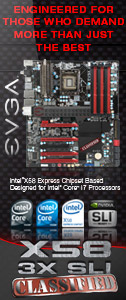The Product.
As mentioned on the last page, the inner box pulls out and holds the first fan. This is of the120mm variety and appears to be of the Spire Cop’s own make. The specification of the fan is as thus:
- 1500 RPM2.4W rotational speed
- 21 dBA Noise Level
- 65.78 CFM
One can wonder if these specifications are accurate as 21dba noise is very quiet as compared to its rated CFM.
One always appreciates open cornered fans, as they are so much easier to work with than the closed variety. In addition the power connector for the above fits both three pin and four pin molex plugs.
Underneath the white box is the cooler itself protected in a blister carton. Also included inside this is the second fan, which appears to be of the same variety as of the first.
Pulling out the CPU cooler itself one of the opinion that even though the fins are aluminium; it is still a weighty blighter. However it feels solid and the general construction of the product is second to none.
Moving closer to the ‘fins’ of the heatsink we find that the TherMax Eclipse II has 46 chrome plated aluminum fins. However the fins are fairly wide, providing ample heat dissipation surface, and they are dimpled; Spire claims that the dimples will increase the heat transfer rate of the cooler; in truth we cannot really test this claim but let us take the aforementioned companies word for now. The U shape of the fins reduces the airflow resistance and therefore the generated noise. The fin sides are bent in order to create a form of wall on the sides of the cooler, directing airflow by forcing all of the air to exit from the other side of the cooler and creating a nice visual effect.
TherMax Eclipse II comes with five 8mm thick nickel plated heatpipes, which come in direct contact with the CPU, absorbing and transferring the generated heat directly to the aluminium fins. The heatpipes themselves come nickel plated, but are copper underneath; which then inturn comes into direct contact with the processor
.
The rest of the cooler’s base however is made out of aluminium and the top part resembles a small heatsink. Given the aforementioned we fail to see how such a small heatsink would help at all, yet it seems that Spire engineers felt that it might aid the thermal performance of their product.
We can talk all we wish about features, however it is the ease of installation and the level of performance is where it counts.




















